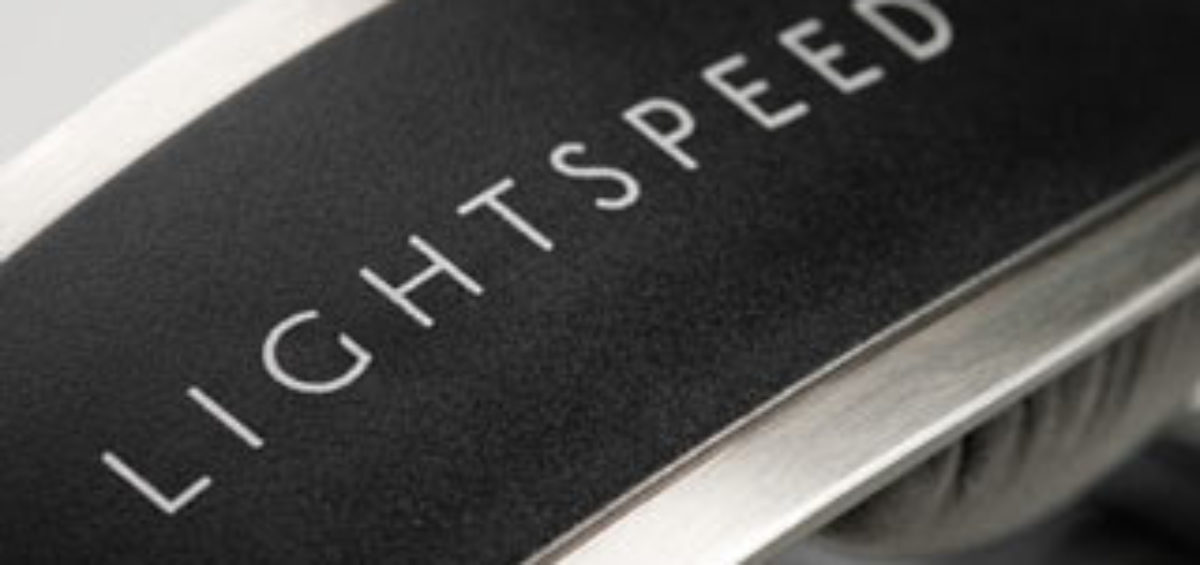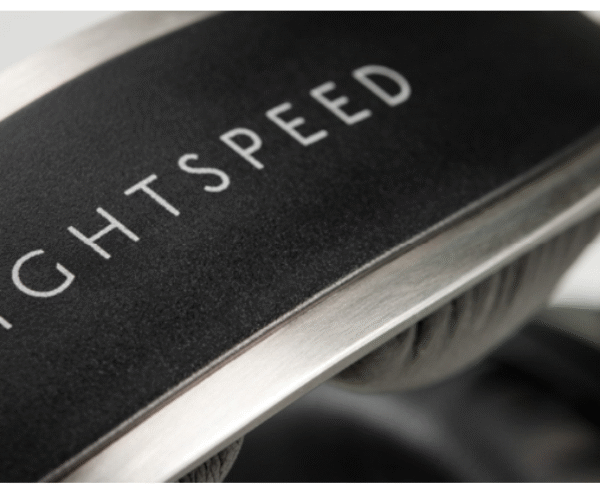Summary of Article:
- TSO (Technical Standard Order) is an FAA authorization, not a certification.
- It sets a minimum performance standard but does not guarantee superior quality or safety.
- General aviation (GA) pilots are not required to use TSO headsets.
- Commercial airlines may require TSO headsets, but often only mandate that one is available, not necessarily worn.
- Lightspeed headsets meet rigorous standards like ISO 9001:2015, FCC, and CE, and are fully capable for civil aviation use.
What Is TSO and Why Does it Matter?
We often hear this question from pilots that are considering a new aviation headset. When it comes to the term “TSO” (Technical Standard Orders) regarding headsets there is a lot of confusion that we will try to clear up here.
TSO is not a certification, but rather, an authorization. From the FAA website:
“A TSO is a minimum performance standard for specified materials, parts, and appliances used on civil aircraft. When authorized to manufacture a material, part, or appliances to a TSO standard, this is referred to as TSO authorization. Receiving a TSO authorization is both design and production approval. Receiving a TSO Authorization is not an approval to install and use the article in the aircraft. It means that the article meets the specific TSO and the applicant is authorized to manufacture it.”
Is a TSO Headset Required for General Aviation (GA) Pilots?
No. The FAA does not require TSO headsets for any civil aviation operations, including Part 91, 121, or 135.
Do Commercial Airline Pilots Need TSO Headsets?
It depends. While the FAA doesn’t mandate commercial pilots use TSO aviation headsets, individual operators may choose to require a TSO headset be either “available to the pilot” or “worn by the pilot.” If you fly for an employer with an operations manual that has this requirement, it is important to understand the language in the manual and abide by it. We have seen many instances where a TSO headset is present on the flight deck in a storage compartment, and the pilots are wearing a headset of their choice that may or may not be TSO approved.
Are TSO Headsets Better in Emergency Situations?
A Lightspeed headset will perform the same as any TSO headset in emergency situations. For example, if the batteries die during flight, there will still be uninterrupted communication (fail safe mode). If there is a complete power failure in the aircraft, the Bluetooth feature will enable you to use a cellular or satellite phone to contact ATC – depending on which you have on board.
Are TSO Headsets Higher Quality than Other Headsets?
Not necessarily, and in the case of Lightspeed headsets, no. A standard that is more applicable in guaranteeing the quality of a headset is the ISO (International Organization for Standardization) standard. As an ISO 9001:2015 certified company, Lightspeed rigorously maintains ISO standards for design, production, and all other business processes. Maintaining this certification requires annual internal and external audits and adherence to a very stringent and specific set of international guidelines. This ensures that everything we do is process-oriented and will consistently result in the world-class outcome we demand of our products. As you consider your next headset purchase, asking if the company is ISO 9001:2015 certified will give you an indication of how seriously they pursue quality. Like Lightspeed, the best ones will have the certification.
Why Don’t All Headset Manufacturers Pursue TSO Authorization?
Because TSO authorization is not an FAA requirement, and is a bureaucratic and expensive process to maintain, it is Lightspeed’s view that it is an unnecessary cost burden that must be passed onto customers to get a feature that adds no tangible value in improving safety or the flying experience.
Why Are Lightspeed Headsets Not TSO Authorized?
In summary, Lightspeed chooses not to pursue TSO (Technical Standard Order) authorization because:
- It is not required by the FAA for civil aviation operations.
- It does not guarantee superior quality or safety.
- The process is bureaucratic and costly, and those expenses would be passed onto the customer without adding meaningful value.
Instead, Lightspeed has chosen to focus on maintaining the following standards and certifications, as we believe they add significant safety, quality, and value to the customer:
- ISO 90001:2015 certification
- FCC Standards
- CE Standards
- Apple MFi standards
Having said that, you may still find yourself buying a TSO headset from one of our competitors because your employer mandates it. We understand that and there are some good options to consider if that is the case. Absent a mandate from your employer, you are free to select the headset that best meets your needs without regard to the TSO approved requirements.
Conclusion: Do I need a TSO Headset?
Short answer: No—unless your employer requires it.
As mentioned above, the FAA does not mandate TSO (Technical Standard Order) headsets for any civil aviation operations, including Part 91, 121, or 135. What this means for the general aviation (GA) community is that pilots are free to choose headsets based on comfort, performance, and quality, rather than TSO status.
For commercial airline pilots, the situation can vary. While the FAA doesn’t require TSO headsets, individual operators—such as major airlines—may include headset requirements in their operations manuals. Often, this means a TSO headset must be available in the cockpit, but not necessarily worn by the pilot.















Flown ’em all. Simply, nothing else compares.
I want to know why Lighspeed decided not to go after the TSO certification! I suspect the cost but I would like to hear from Lightspeed. I own 2 NC Lightspeed headsets and planning to buy either the Zulu 3 or the A20. This is the last piece of the puzzle.
This is a good question for anyone thinking of spending upwards of $1,000 on an important personal communications wearable! We actually do virtually all of those TSO tests (and some others), and pass those at one or both of the TSO standard levels specified. Ironically, TSO sets no standard for things like ANR performance or comfort, probably the two areas that are most important to the quality of a pilot’s user experience. Here, we do extensive design and testing to ensure quieting performance, intelligibility, and wearability are exceptional. Regarding “worthiness of cost”, often referred to as product value, there are two or three quality products to consider around $1,000. If they are of equal quality, how would one decide? I would suggest you do a bit more exploration into both the ‘wearing’ and the ‘ownership’ experience. If you can, try both these on and hopefully fly with them. Odds are, you will find the Zulu 3 a more comfortable, more enjoyable headset. You can reference a prior blog comparing the A-20 with the Zulu 3 for more details or watch our own comparative demo video here. Compare warranty coverage, repair costs, and the customer philosophy from each company. I am sure you will find Lightspeed provides the most responsive, most personal, and most aviation-centric support to our customers of any of the brands considered.
Before I comment just saying I have a Zulu 3 ,best headset ever.
ISO does not say you have a high standard just that you are abiding by the standards you have set in your
ISO documentation, all the checks and inspections are to confirm that you adhere to your stated standards. I know it does not apply in Lightspeeds case but you could make the worst product ever but if it is made to the specification stated in your ISO documentation they can claim it is made to ISO specification.
Carry on the good work, can’t imagine ever flying with anything other than a Lightspeed headset.
Lightspeed Aviation does not manufacture adapter cords. However, we do work with many authorized dealers that do have these types of adapters available. We also offer a power panel (6 pin Lemo connector) plug configuration on our Zulu 3 and Tango headsets and offer a very nice Trade Up program for your David Clark. You can also locate the closest dealer to you, from your favorite from our website here: https://www.lightspeedaviation.com/authorized-dealers/.
If you do not like a lot of wires in your cockpit, we would recommend the only wireless ANR headset on the market, our Tango Wireless ANR headset.
Thank you for this very informative clarification!!
Thank you, and yes I really enjoy my Zulu headset.
Thank you Lightspeed. You’re the best!
Thanks so much for this information. You should present this more often. My company flies Bose, I fly Zulu. Zulu is better. Zulu can be worn all day, Bose gives you a headache after 10+ hours, Zulu does not. Thank you for making such a great product!
TSO compliance typically require testing to temperature, Vibration, moisture/humidity, dust/sand, impact, EMI, etc., standards. Without TSO-compliance, how do we understand that the “quality”aspects of a LightSpeed product is worthy of its cost? Lou.
Thanks Lou, this is a good question for anyone thinking of spending upwards of $1,000 on an important personal communications wearable! We actually do virtually all of those TSO tests (and some others) you mention, and pass those at one or both of the TSO standard levels specified. Ironically, TSO sets no standard for things like ANR performance or comfort, probably the two areas that are most important to the quality of a pilot’s user experience. Here, we do extensive design and testing to ensure quieting performance, intelligibility, and wearability are exceptional. Regarding “worthiness of cost”, often referred to as product value, there are two or three quality products to consider around $1,000. If they are of equal quality, how would one decide? I would suggest you do a bit more exploration into both the ‘wearing’ and the ‘ownership’ experience. If you can, try both these on and hopefully fly with them. Odds are, you will find the Zulu 3 a more comfortable, more enjoyable headset. You can reference a prior blog comparing the A-20 with the Zulu 3 for more details. Compare warranty coverage, repair costs, and the customer philosophy from each company. I am sure you will find Lightspeed provides the most responsive, most personal, and most aviation-centric support to our customers of any of the brands considered.
In my fifty years of flying Corporate, Charter, and Pleasure I have not found a headset that exceeds the performance of my Zulu Lightspeed and it is worth the expense having it refurbished recently.
Thanks!… I think your headsets are expensive enough without adding an unnecessary and burdensome cost to the process that offers exactly zero benefit to pilots. Not pursing TSO Authorization is the correct decision IMHO. (Lightspeed user since the original 20K and loving my recently upgraded Zulu 3s).
I agree with Lightspeeds rational. They do make a superior headset that is comfortable and has excellent sound quality with awesome noise-canceling. I Have been more than satisfied with the Lightspeed product. understanding the radios is so critical to safety. One of the first things to drop out under stress is the radio, so clarity is essential to keeping situational awareness. as a former USAF Instructor pilot in UPT and as a retired DAL pilot with thousands of hours I respect and agree with lightspeeds decision not to cow-tow to a non-regulatory requirement when their product is already far above what is officially required.
You didn’t really say why you didn’t choose to pursue TSO approval, you just said why it didn’t matter.
Just be honest, is it a cost to the company you’re not willing to pay?
I don’t care either way, I’m happy with my product
We actually do virtually all of those TSO tests (and some others), and pass those at one or both of the TSO standard levels specified. Ironically, TSO sets no standard for things like ANR performance or comfort, probably the two areas that are most important to the quality of a pilot’s user experience. Here, we do extensive design and testing to ensure quieting performance, intelligibility, and wearability are exceptional.